Abstract
Twenty-six subjects with thoracic scoliosis due to various causes have been investigated. They all performed a progressive exercise test under standardised conditions, and their maximum oxygen uptake (VO2 max), blood gases, and ventilatory and heart rate responses were observed. The VO2 max was significantly below normal and was proportional to the forced expiratory volume in one second (FEV1) and maximum exercise ventilation (VE max). Exercise was limited by ventilatory factors in 80% of the subjects who exercised maximally. VE max was diminished, but the dyspnoeic index was normal. The minute ventilation (VE) at any given VO2 was about 20% greater than normal. This hyperventilation taken with the low VE max explains why exercise is usually ventilation-limited in these subjects. Tidal volume (VT) increased linearly with ventilation until VT max was reached. The tidal volumes at any given ventilation were less than normal, but when expressed as a percentage of vital capacity (VC) they were above normal. The heart rate increased more rapidly than normal, but this appears to be a physiological result of the small muscle mass of these subjects and not a pathological response.
Full text
PDF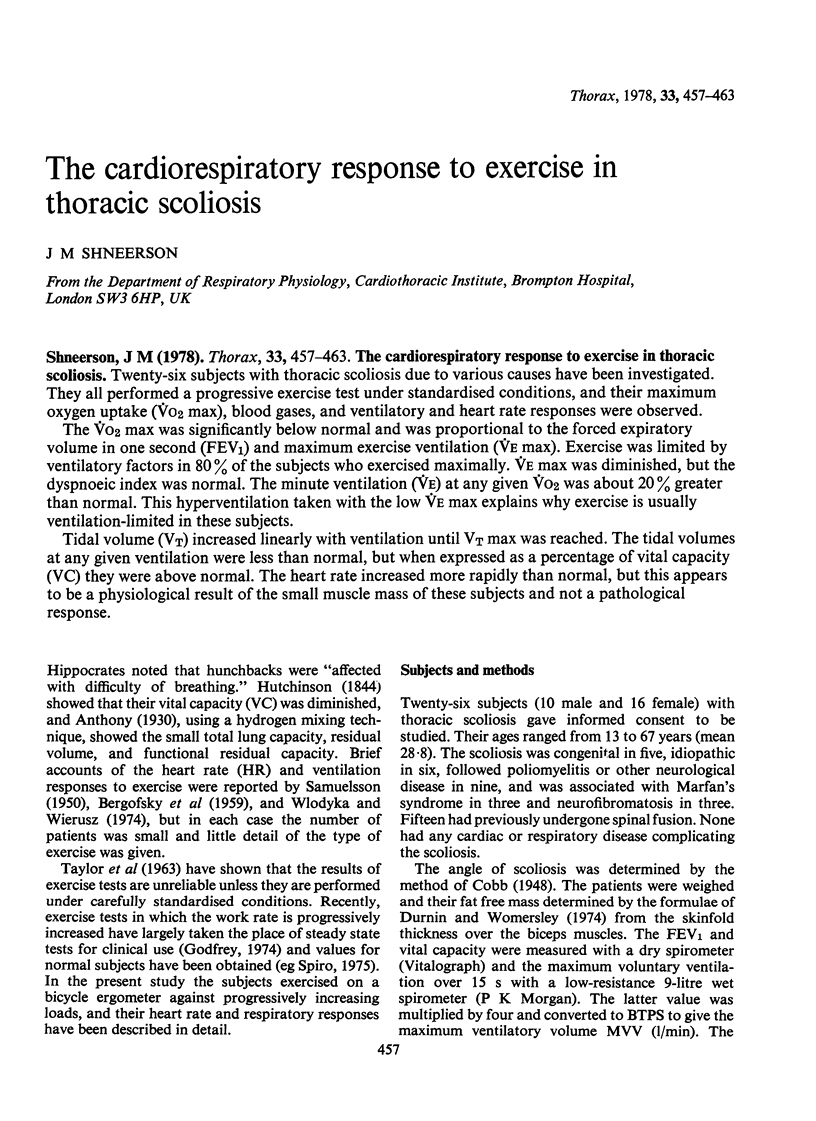
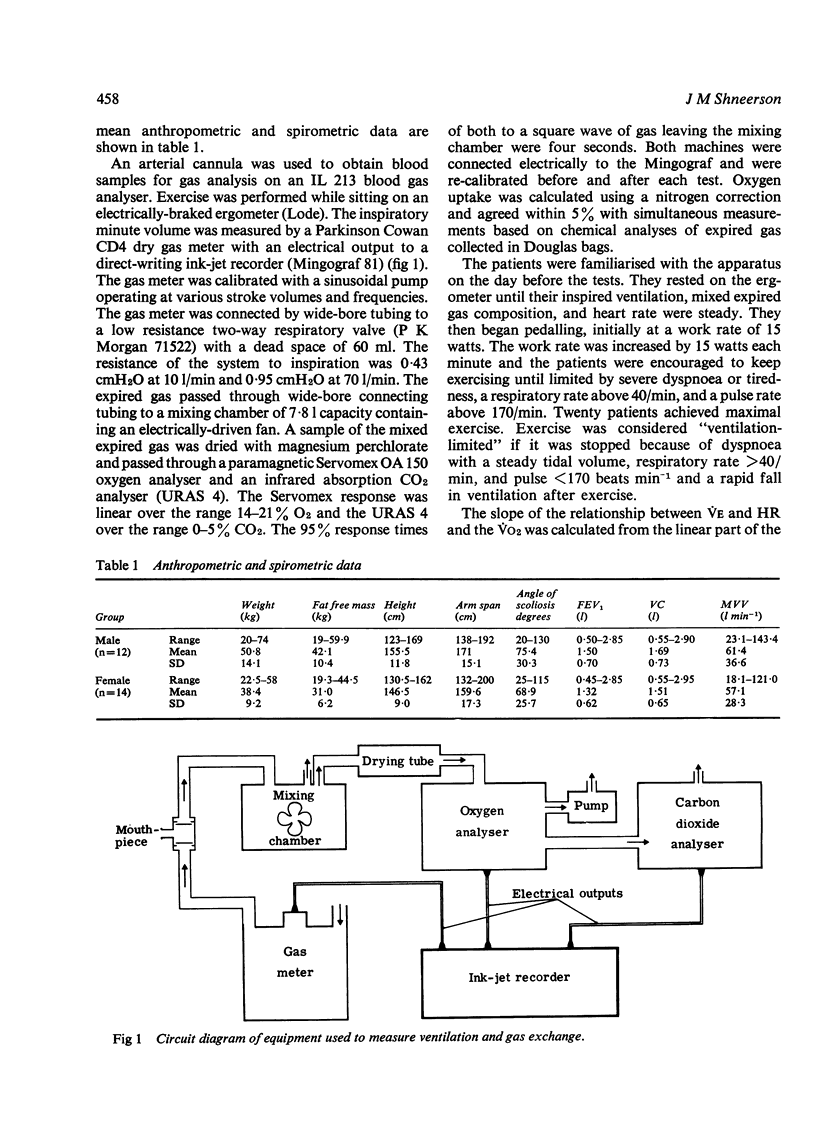
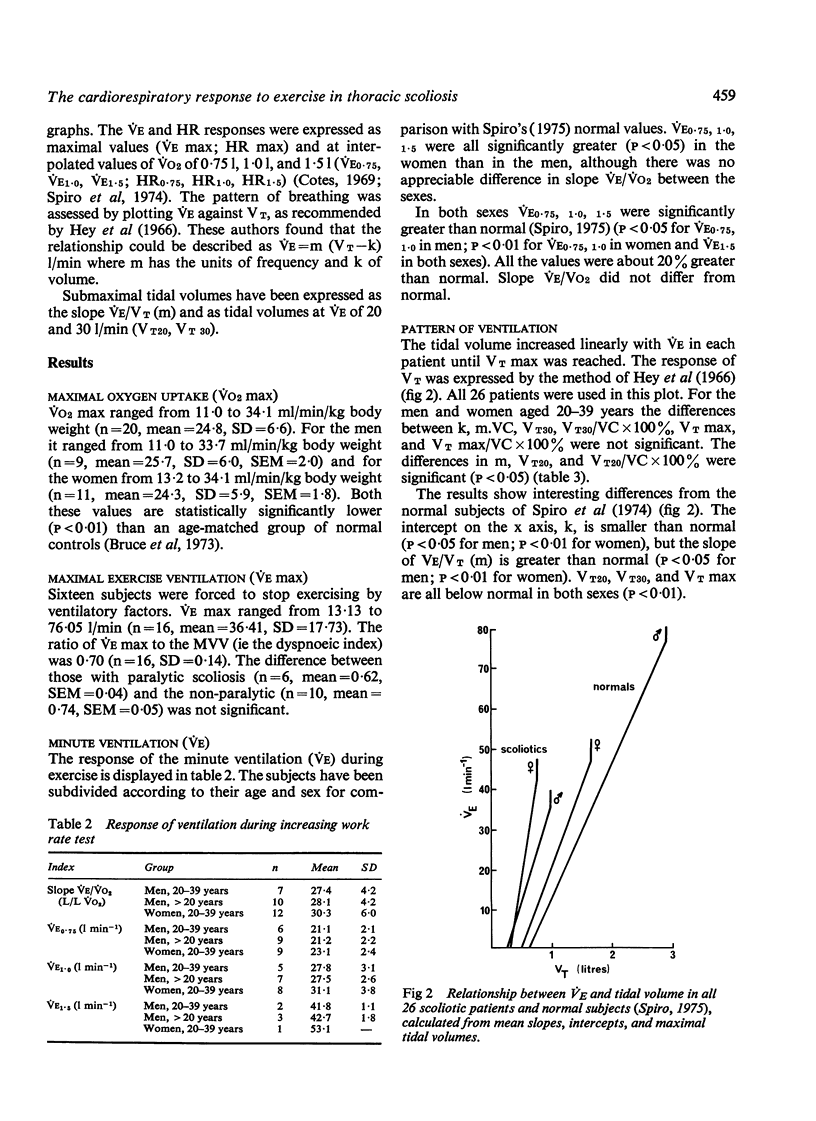
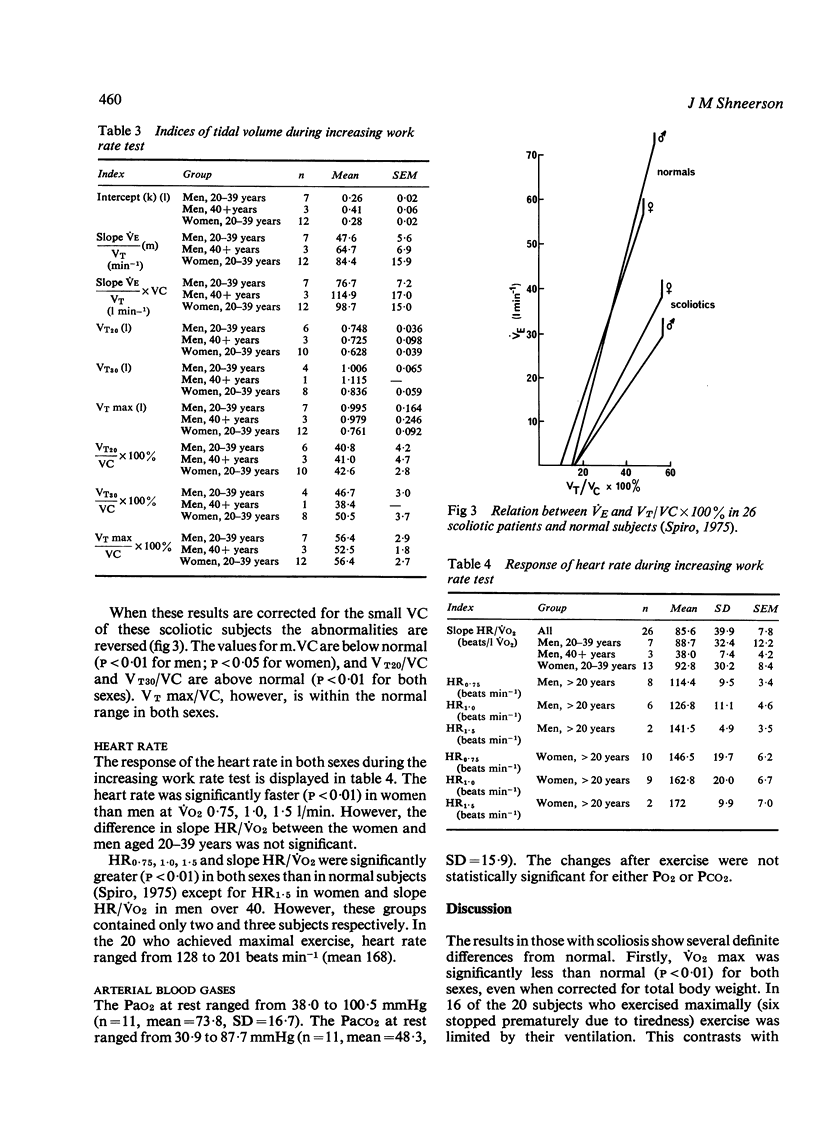
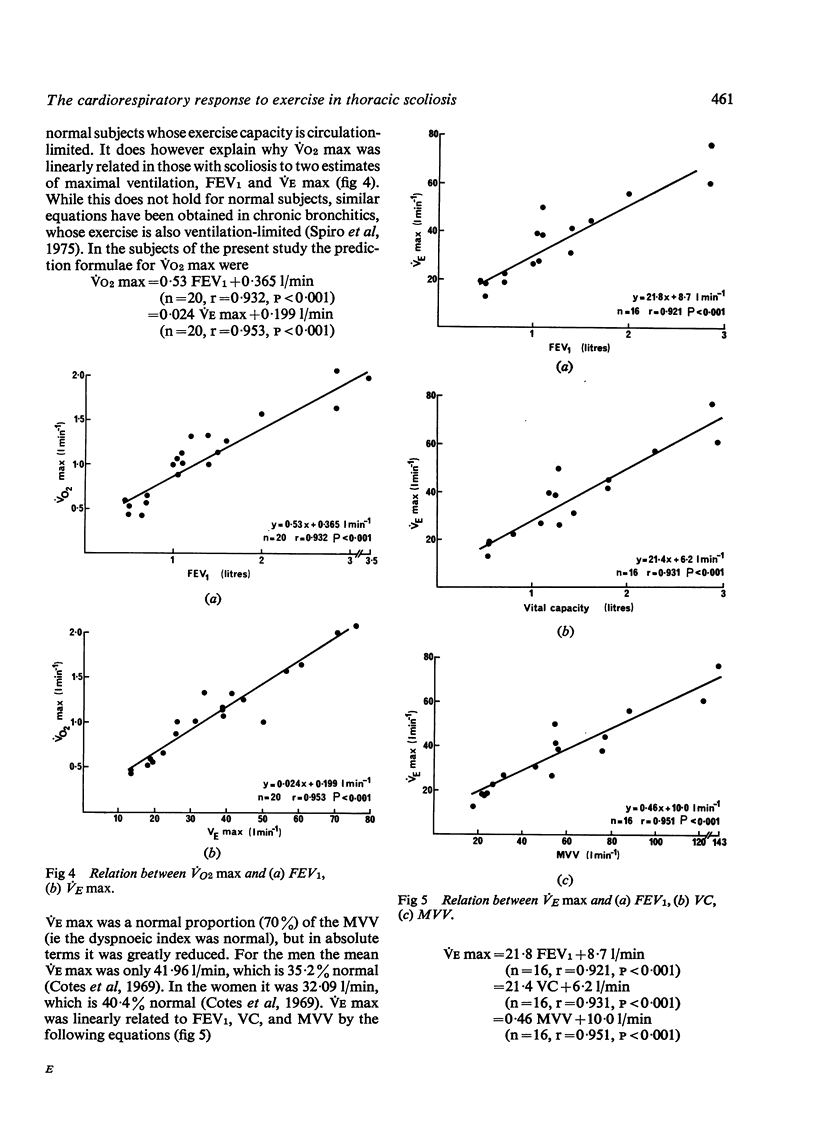
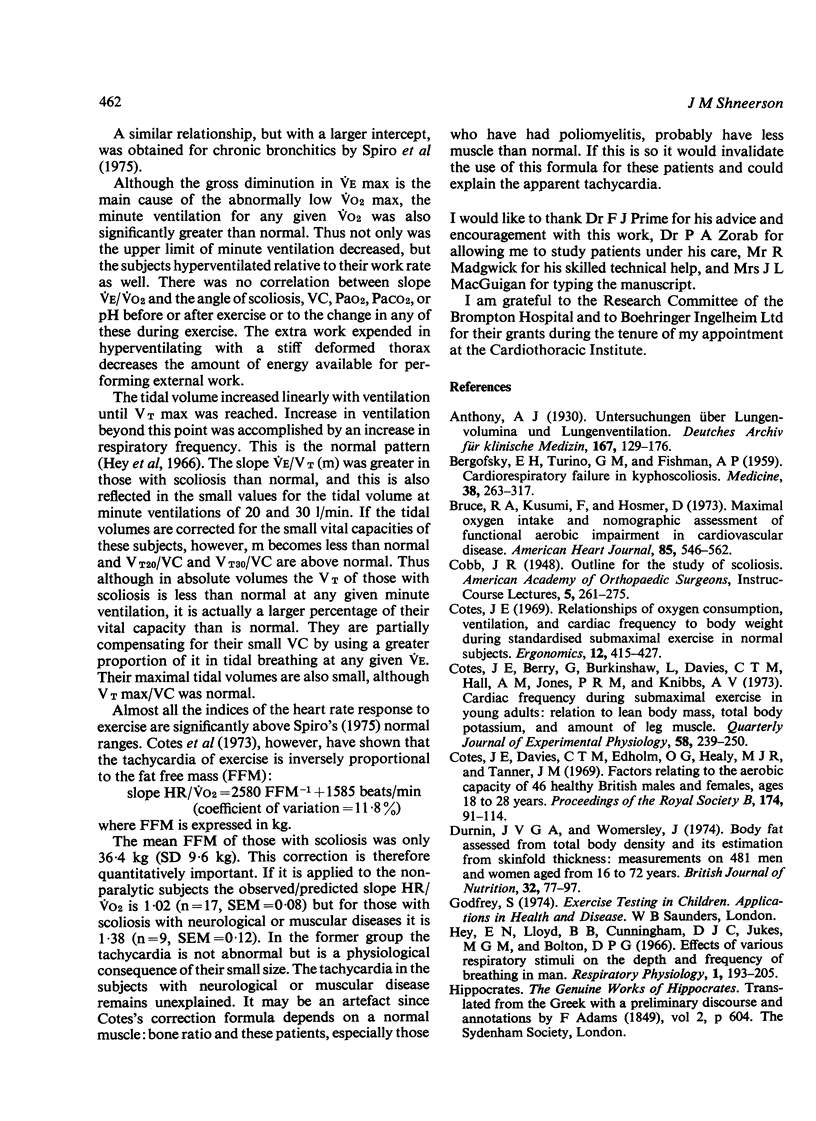

Selected References
These references are in PubMed. This may not be the complete list of references from this article.
- BERGOFSKY E. H., TURINO G. M., FISHMAN A. P. Cardiorespiratory failure in kyphoscoliosis. Medicine (Baltimore) 1959 Sep;38:263–317. doi: 10.1097/00005792-195909000-00004. [DOI] [PubMed] [Google Scholar]
- Bruce R. A., Kusumi F., Hosmer D. Maximal oxygen intake and nomographic assessment of functional aerobic impairment in cardiovascular disease. Am Heart J. 1973 Apr;85(4):546–562. doi: 10.1016/0002-8703(73)90502-4. [DOI] [PubMed] [Google Scholar]
- Cotes J. E., Berry G., Burkinshaw L., Davies C. T., Hall A. M., Jones P. R., Knibbs A. V. Cardiac frequency during submaximal exercise in young adults; relation to lean body mass, total body potassium and amount of leg muscle. Q J Exp Physiol Cogn Med Sci. 1973 Jul;58(3):239–250. doi: 10.1113/expphysiol.1973.sp002212. [DOI] [PubMed] [Google Scholar]
- Cotes J. E., Davies C. T., Edholm O. G., Healy M. J., Tanner J. M. Factors relating to the aerobic capacity of 46 healthy British males and females, ages 18 to 28 years. Proc R Soc Lond B Biol Sci. 1969 Oct 7;174(1034):91–114. doi: 10.1098/rspb.1969.0082. [DOI] [PubMed] [Google Scholar]
- Cotes J. E. Relationships of oxygen consumption, ventilation and cardiac frequency to body weight during standardized submaximal exercise in normal subjects. Ergonomics. 1969 May;12(3):415–427. doi: 10.1080/00140136908931065. [DOI] [PubMed] [Google Scholar]
- Durnin J. V., Womersley J. Body fat assessed from total body density and its estimation from skinfold thickness: measurements on 481 men and women aged from 16 to 72 years. Br J Nutr. 1974 Jul;32(1):77–97. doi: 10.1079/bjn19740060. [DOI] [PubMed] [Google Scholar]
- Hey E. N., Lloyd B. B., Cunningham D. J., Jukes M. G., Bolton D. P. Effects of various respiratory stimuli on the depth and frequency of breathing in man. Respir Physiol. 1966;1(2):193–205. doi: 10.1016/0034-5687(66)90016-8. [DOI] [PubMed] [Google Scholar]
- Spiro S. G., Hahn H. L., Edwards R. H., Pride N. B. An analysis of the physiological strain of submaximal exercise in patients with chronic obstructive bronchitis. Thorax. 1975 Aug;30(4):415–425. doi: 10.1136/thx.30.4.415. [DOI] [PMC free article] [PubMed] [Google Scholar]
- Spiro S. G., Juniper E., Bowman P., Edwards R. H. An increasing work rate test for assessing the physiological strain of submaximal exercise. Clin Sci Mol Med. 1974 Feb;46(2):191–206. doi: 10.1042/cs0460191. [DOI] [PubMed] [Google Scholar]
- TAYLOR H. L., WANG Y., ROWELL L., BLOMQVIST G. THE STANDARDIZATION AND INTERPRETATION OF SUBMAXIMAL AND MAXIMAL TESTS OF WORKING CAPACITY. Pediatrics. 1963 Oct;32:SUPPL–722. [PubMed] [Google Scholar]
- Wlodyka P., Wierusz L. Trening wydolności krazeniowo-oddechowej u chorych z bocznym skrzywieniem kregosłupa i deficytem oddechowym. Chir Narzadow Ruchu Ortop Pol. 1974;39(4):481–486. [PubMed] [Google Scholar]


